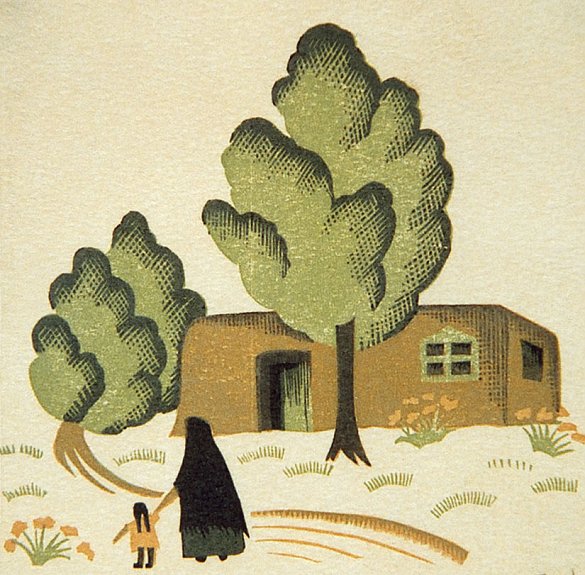Willard Clark
1911-1992
Willard Clark modestly considered himself a craftsman rather than an artist. For decades, he carved delicate, wooden engravings of Southwestern landscapes, adobe dwellings and señores y señoras, the essence of Santa Fe in the 1920's and 1930's.
Raised in Argentina, Clark studied art at the Grand Central Gallery in New York to become a painter and commercial illustrator. In 1928 Clark came through Santa Fe on his way to California, where his father was the head of the South American branch of Philips Petroleum. While visiting Santa Fe, he realized that Santa Fe had only one print shop, operated by the New Mexican, and he decided to stay in Santa Fe and start his own printing business.
His quaint images soon became synonymous with the establishments for which he produced them, such as the menu design for Fred Harvey restaurants and hotels. In 1943 Clark accepted a position as a machinist at the National Laboratory in Los Alamos. Though he planned to return to his print shop after the war, Clark remained with the Lab until his retirement in the 1970's.
In 1988 he began creating a book of Santa Fe memoirs between 1928 and 1943 titled Recuerdos de Santa Fe. His retirement allowed the time to create wood engravings of exceptional detail which reflected the charm that Clark felt had vanished from Santa Fe.
Unlike a woodblock print, which is carved with a wide blade on the plank side of the wood, wood engravings are etched on the end-grain with fine instruments much like those used on copper plates. Clark made wood engravings and woodblock prints, making the most of his tools and grinding his own pigments.
Shortly before his death in 1992, Clark was recognized by the Museum of Fine Arts of New Mexico with a retrospective show.
Actively seeking works by Willard Clark.

